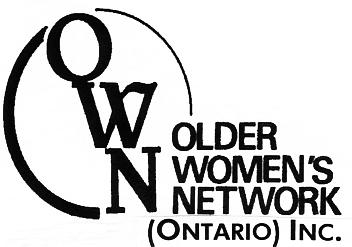DID YOU KNOW?
Who are mobility-challenged?
People who are mobility-challenged include:
• those with weakness in their arms and/or hands, making holding on to bus stanchions difficult;
• those with leg weakness, making entry and exit of buses difficult, and going up and down long staircases in the subways extremely tiring;
• those with hearing difficulties that make it hard to understand driver instructions;
• visually-impaired people who have trouble with steps in both buses and subways.
People who are mobility-impaired include those who use a wheelchair, scooter, walker or cane. These people may also have challenges related to hearing or seeing obstacles, and often have weakness in arms and/or hands as well.
Older Pedestrians
Mid-life and older people, particularly those with mobility challenges or impairments, can find pedestrian activity extremely challenging and even dangerous.
• People using wheelchairs or scooters can become housebound for days in winter when sidewalks are not cleared.
• Crosswalks continue to be a major threat for pedestrians – especially for older people, who may move too slowly for some drivers.
• For those who need to rest frequently, there are not enough benches at bus stops and throughout public spaces in the city.
Accessibility for Ontarians with Disabilities Act (AODA), 2005
The provincial government is now moving forward at a snail’s pace to develop an Accessible Transportation Standard to conform to this Act, one which aims to make travel easier for people with disabilities, families with children in strollers, and other Ontarians. According to the 2009 Annual Report on the progress towards implementation, the requirements for an Accessible Transportation Standard may include:
• equipping new vehicles with lifts and grab bars so people can easily get on and off;
• improving lighting so people with low vision are able to board and move safely within vehicles;
• providing verbal and/or electronic announcements to passengers (done in Toronto);
• making it easier for people with severe disabilities to travel on specialized transportation (paratransit).
Note that the Annual Report uses the words “may include” rather than “shall include” or even “must include.” Thus, we conclude that this this transportation standard promises very little and guarantees nothing. In addition, there is no timetable that we can hold them to; the government has given itself 20 years — to the year 2025 — to implement the standard.
So, don’t hold your breath.
WHAT WE FIGHT FOR
Public Transit
OWN lobbies the Toronto Transit Commission (TTC) for improvements in public transit services in the following respects:
• Better training for transit drivers on the needs and capacities of people with disabilities;
• More elevators in subways, and better maintenance standards; — in more stations
• Better signage for reserved seating for seniors and people with disabilities, so the general public is educated to relinquish a reserved seat;
• Explicit and comprehensive commitment by the TTC to fully accommodate all people with disabilities on public transit; such commitment should be on public record so that we can hold them accountable for their performance.
Pedestrians
• Penalties for drivers who hit pedestrians at crosswalks need to be increased.
• Older people need more benches on which to rest, both at bus stops and throughout our public spaces.
• After City of Toronto snow-removal crews plow the streets, they must be sure to clear away mounds of plowed snow from driveways and street crossings, so that all of us — but especially people with disabilities — are able to move about the neighbourhood.
• Seniors and disabled people who cannot clear snow for themselves have registered with the City to have someone do it for them, but City of Toronto officials must more closely monitor those employees who are assigned to this snow clearance, since the service is not always performed in a timely and effective manner.
And then there is Wheel-Trans…
OWN recognizes that the Wheel-Trans service leaves much to be desired. If wealthy people used Wheel-Trans, no doubt the service would improve.
In the meantime, Wheel-Trans users are captives of the system. There is little that can be done except to urge you to speak to your Counsellor, or make a deputation to the TTC Board for improvements in service. The TTC Board meets every two weeks and they are open to hear deputations from citizens.
Some people have tried the Ontario Human Rights Commission, but its hands seem to be tied unless funding for Wheel-Trans is increased, and only the TTC Board can provide that increase.
Greater Wheel-Trans service will be required in the future as aging baby-boomers need more assistance with their mobility challenges.
Rural transportation for those with mobility limitations
OWN recognizes the challenges that people with disabilities face in rural communities. Being dependent on family or friends for transportation is onerous and often impossible. Some communities band together to provide limited transportation services, usually to the doctor or dentist. But these services usually do not provide access to social occasions.
One solution would be for the provincial government to grant a transportation allowance to people in rural areas so they could use taxis.
For those with some money, increasing the grant for the modification of a vehicle to provide access for a wheelchair or scooter user would also help.
by Janice Tait, January 2011
For your reference, here is a link to the comprehensive (325 pages) World Report on Disability (2011) from the World Health Organization and The World Bank.
Page last updated June 15, 2011

